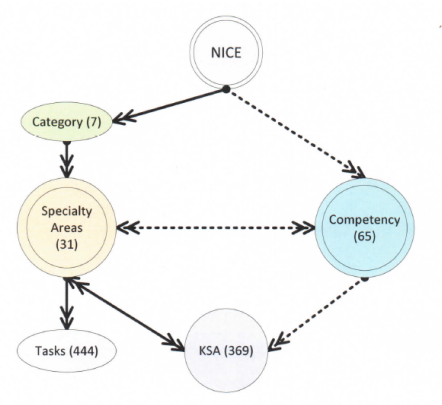Difference between revisions of "Template:Article of the week"
Shawndouglas (talk | contribs) (Updated article of the week text) |
Shawndouglas (talk | contribs) (Updated article of the week text) |
||
| Line 1: | Line 1: | ||
<div style="float: left; margin: 0.5em 0.9em 0.4em 0em;">[[File: | <div style="float: left; margin: 0.5em 0.9em 0.4em 0em;">[[File:Fig1 Hodhod IntJofOnlineBiomedEng2019 15-3.png|240px]]</div> | ||
'''"[[Journal: | '''"[[Journal:CyberMaster: An expert system to guide the development of cybersecurity curricula|CyberMaster: An expert system to guide the development of cybersecurity curricula]]"''' | ||
The growing number of reported cyberattacks poses a difficult challenge to individuals, governments, and organizations. Adequate protection of [[information]] systems urgently requires a [[cybersecurity]]-educated workforce trained using a curriculum that covers the essential skills required for different cybersecurity work roles. The goal of the CyberMaster [[expert system]] is to assist inexperienced instructors with cybersecurity course design. It is an intelligent system that uses visual feedback to guide the user through the design process. Initial test executions show the promise of such a system in addressing the enormous shortage of cybersecurity experts currently available for designing courses and training programs. ('''[[Journal:CyberMaster: An expert system to guide the development of cybersecurity curricula|Full article...]]''')<br /> | |||
<br /> | <br /> | ||
''Recently featured'': | ''Recently featured'': | ||
: ▪ [[Journal:Costs of mandatory cannabis testing in California|Costs of mandatory cannabis testing in California]] | |||
: ▪ [[Journal:An integrated data analytics platform|An integrated data analytics platform]] | : ▪ [[Journal:An integrated data analytics platform|An integrated data analytics platform]] | ||
: ▪ [[Journal:Virtualization-based security techniques on mobile cloud computing: Research gaps and challenges|Virtualization-based security techniques on mobile cloud computing: Research gaps and challenges]] | : ▪ [[Journal:Virtualization-based security techniques on mobile cloud computing: Research gaps and challenges|Virtualization-based security techniques on mobile cloud computing: Research gaps and challenges]] | ||
Revision as of 16:30, 4 November 2019
"CyberMaster: An expert system to guide the development of cybersecurity curricula"
The growing number of reported cyberattacks poses a difficult challenge to individuals, governments, and organizations. Adequate protection of information systems urgently requires a cybersecurity-educated workforce trained using a curriculum that covers the essential skills required for different cybersecurity work roles. The goal of the CyberMaster expert system is to assist inexperienced instructors with cybersecurity course design. It is an intelligent system that uses visual feedback to guide the user through the design process. Initial test executions show the promise of such a system in addressing the enormous shortage of cybersecurity experts currently available for designing courses and training programs. (Full article...)
Recently featured:










